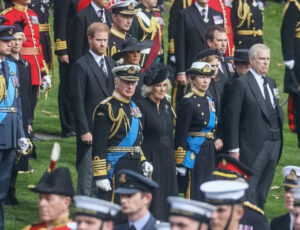This blog post is coauthored by Professors Judith G. McMullen and Mary E. Triggiano.
 Early last month, a group from Marquette University Law School began a restorative justice (RJ) circle event at Racine Correctional Institution. One of us (Professor Mary Triggiano, Director of the Andrew Center for Restorative Justice and former Chief Judge of the Milwaukee County Circuit Court) guided the other (Professor Judith McMullen), six law students, eight community members, and 18 incarcerated men through a series of RJ circles over the course of three days. We believe that our community may be interested in this brief account of the experience.
Early last month, a group from Marquette University Law School began a restorative justice (RJ) circle event at Racine Correctional Institution. One of us (Professor Mary Triggiano, Director of the Andrew Center for Restorative Justice and former Chief Judge of the Milwaukee County Circuit Court) guided the other (Professor Judith McMullen), six law students, eight community members, and 18 incarcerated men through a series of RJ circles over the course of three days. We believe that our community may be interested in this brief account of the experience.
RJ brings people who have harmed others together with people who have been harmed and with community members to promote understanding and healing. RJ practices borrow heavily from methods used by indigenous peoples to solve disputes, mend social relationships, and promote healing. The essence of RJ is “the circle,” where participants sit, whether in chairs or on the floor, in a circle, the facilitator asks a question, and a talking piece is then passed from person to person. Only the person holding the talking piece can speak; no one is allowed to interrupt, and all are asked to practice deep listening and to share stories with an open heart.
A foundational idea of RJ is that when someone commits a harm, there is a ripple effect such that not only the victim of the crime is hurt but so, too, are people in that person’s family and broader community—hence the need in appropriate instances to bring together into the circle survivors of crime, family members, community members, and those who have harmed. RJ challenges participants to see each other’s points of view or experiences, to take ownership of acts they have committed, and to have empathy for each other’s suffering. A tall order, indeed.
On the first day of circles at Racine Correctional Institution, incarcerated men, survivors of violent crimes, and community members took part in various circles, answering queries posed by Triggiano, and listening to each other. This sharing of experience leads circle participants to see each other as fellow human beings with a number of similar needs, fears, and hopes. At one point, the circle was divided into groups to discuss the ripple effect of a hypothetical armed robbery of a mom-and-pop grocery store during which the store owner falls and breaks his hip. Group members quickly identified the harmful effects not only on the unfortunate grocer but also on his family, his employees, his customers, the neighborhood, the first responders, the families of the robbers, and even the robbers themselves. Later, participants would begin to identify the ripple effects of harm they themselves had committed or harms they themselves had suffered.
The second day of the circle centered on the incredibly painful stories of three courageous individuals who had survived violent crimes. Each survivor spoke at length about their life, experiences before, during, and “after” being harmed, and the toll the harm took on them and on their family. Then, each participant in the circle spoke about their reaction to the stories. The near-term impact of these shared stories on the circle participants was almost breathtaking.
Day three focused on healing harms to self and others. As the talking piece was passed around and circle members described the impact of hearing the experiences of survivors, several participants acknowledged that they had not considered the ripple effects of things they had done in the past, but hearing from people who had been harmed by similar crimes stopped them in their tracks and allowed them to own up to what they had done. Listening to the survivors led the men to remember some wrongs that they themselves had experienced and the painful feelings associated with those events. Community participants and survivors came to realize that many of the incarcerated men had themselves survived violent crimes of all sorts. Day three also included a skit designed to lead participants to identify and describe the positive effects of RJ. We divided into five groups, and acted out a skit where several people would try to convince a drug dealer to participate in an RJ circle. Speaking as someone who played the role of drug dealer, Professor McMullen can state from experience that the exercise not only summarized the RJ process and effects but also made everyone walk in someone else’s shoes and look at the world from another perspective.
We were, as one community participant put it, planting seeds of compassion, empathy, understanding, and healing. But we also were able to see tiny sprouts emerge from some of the seeds in the RJ circles. The Law School’s Andrew Center for Restorative Justice is poised to facilitate more circles at Racine Correctional Institution in the future to nurture those sprouts and plant more seeds of hope.

